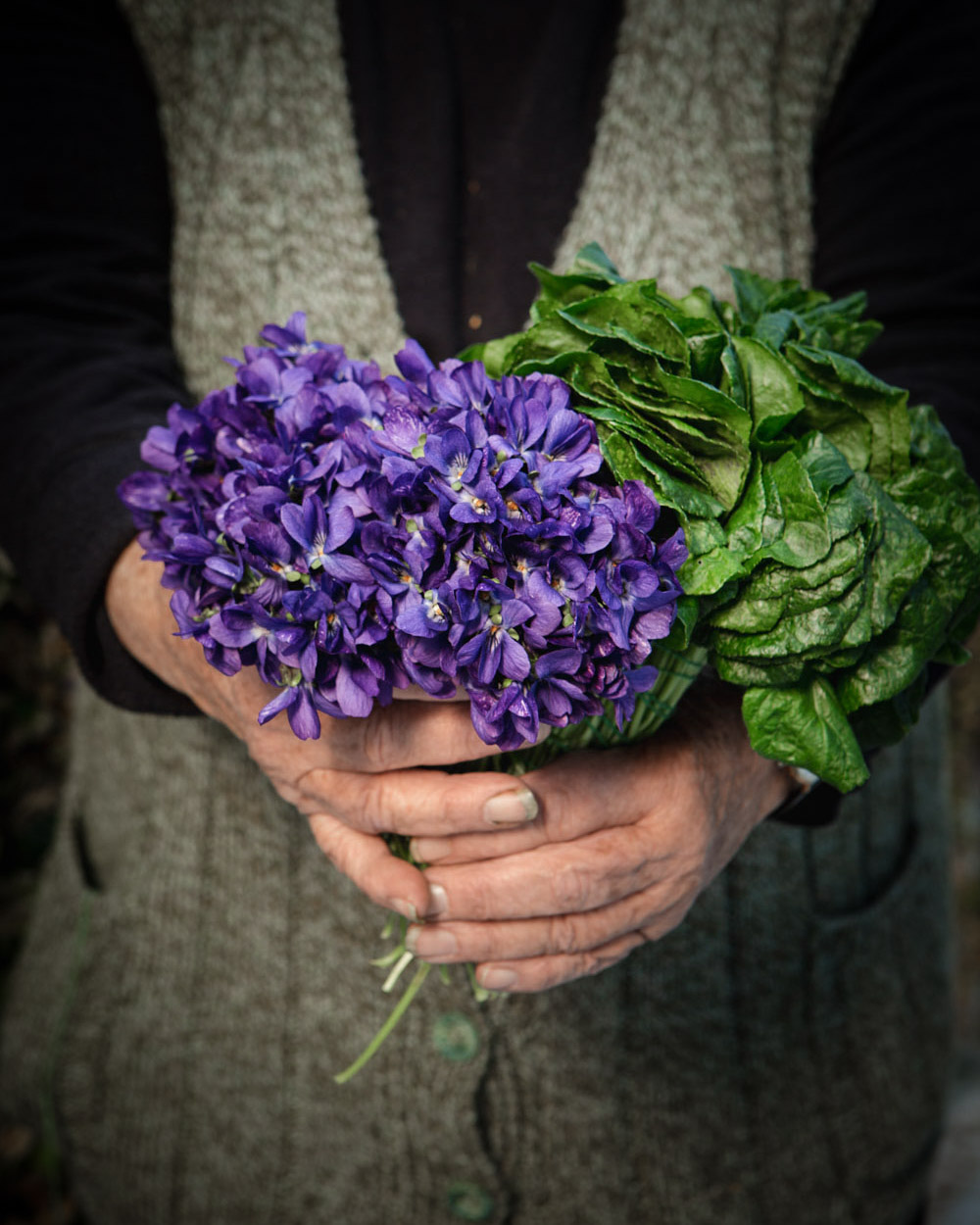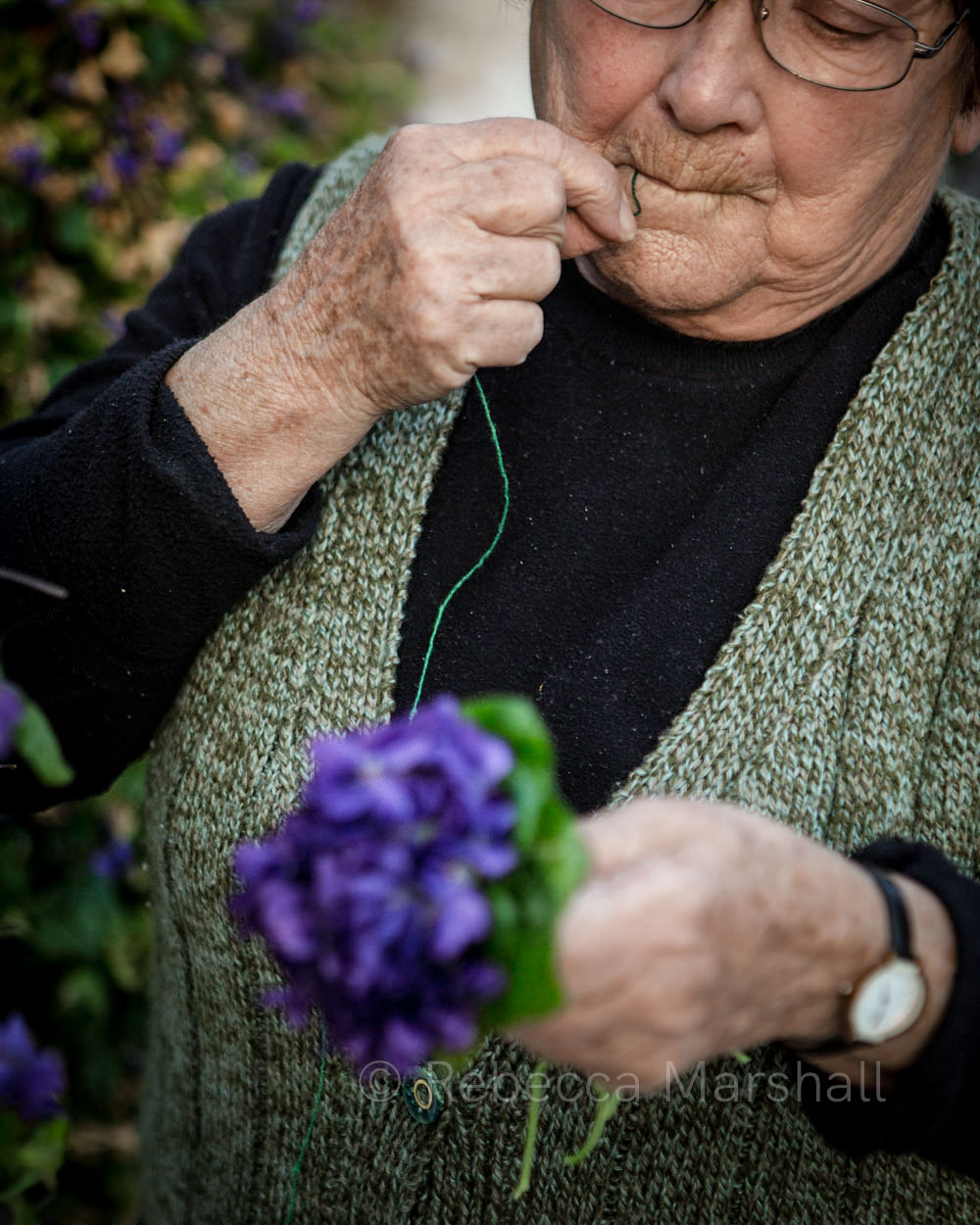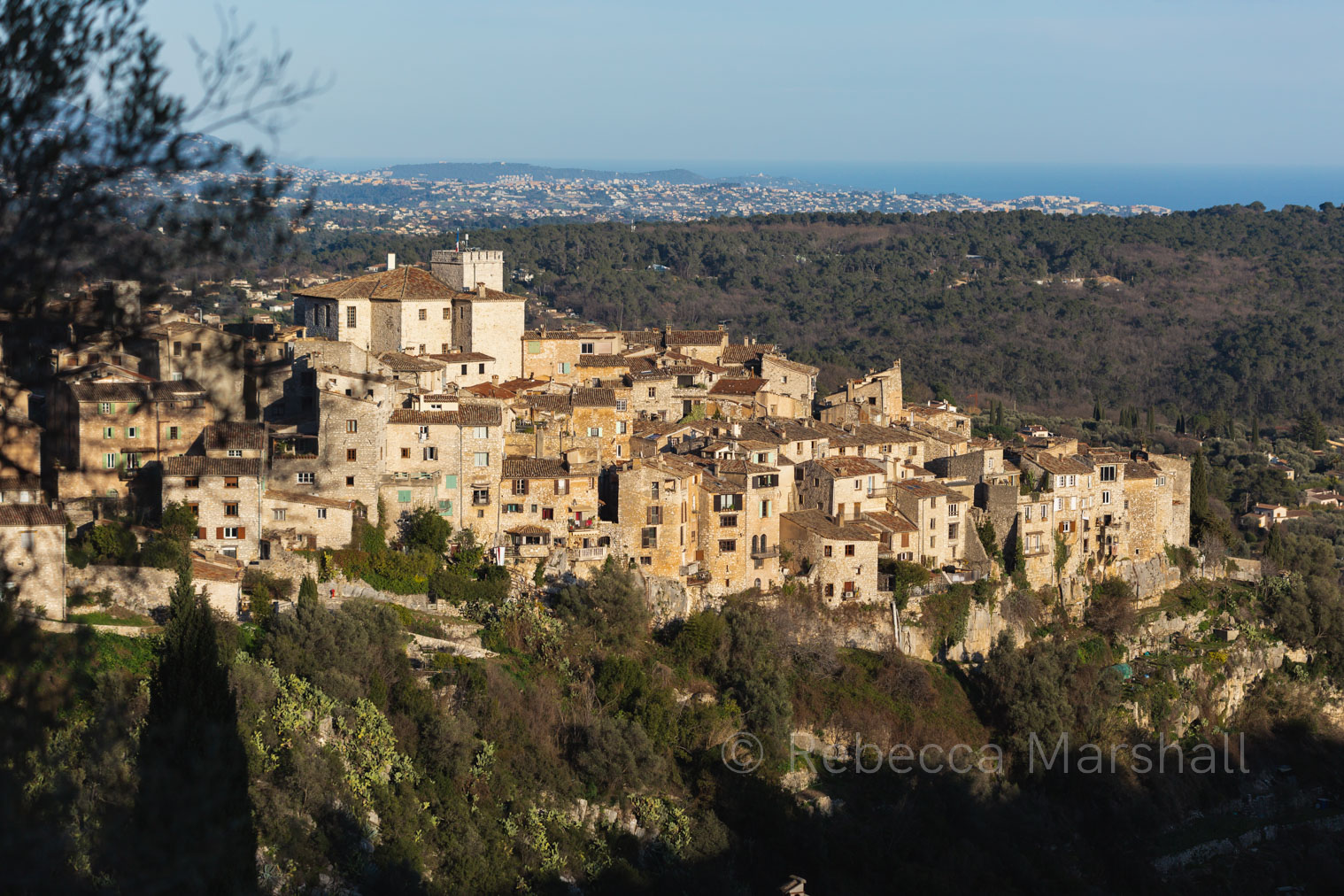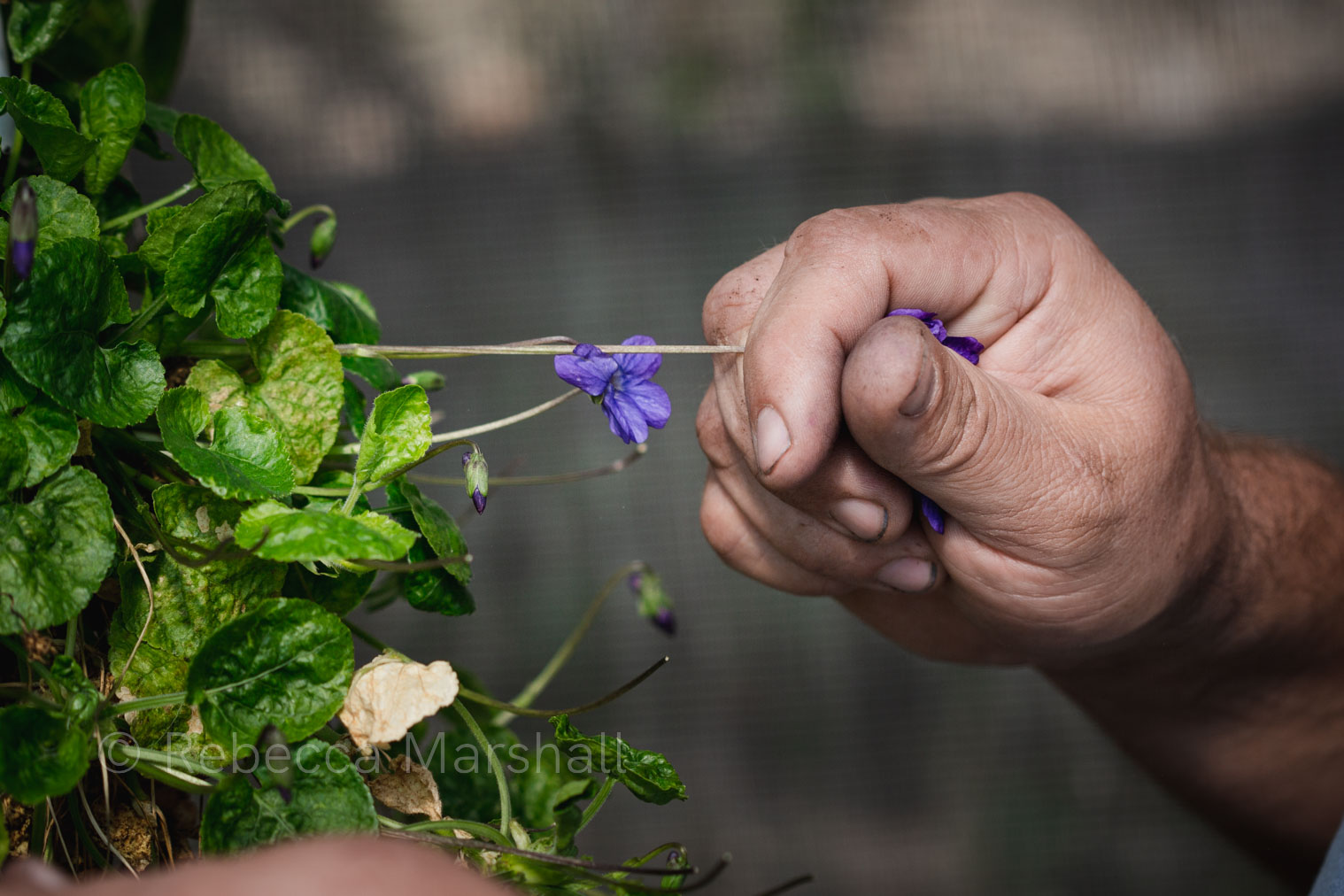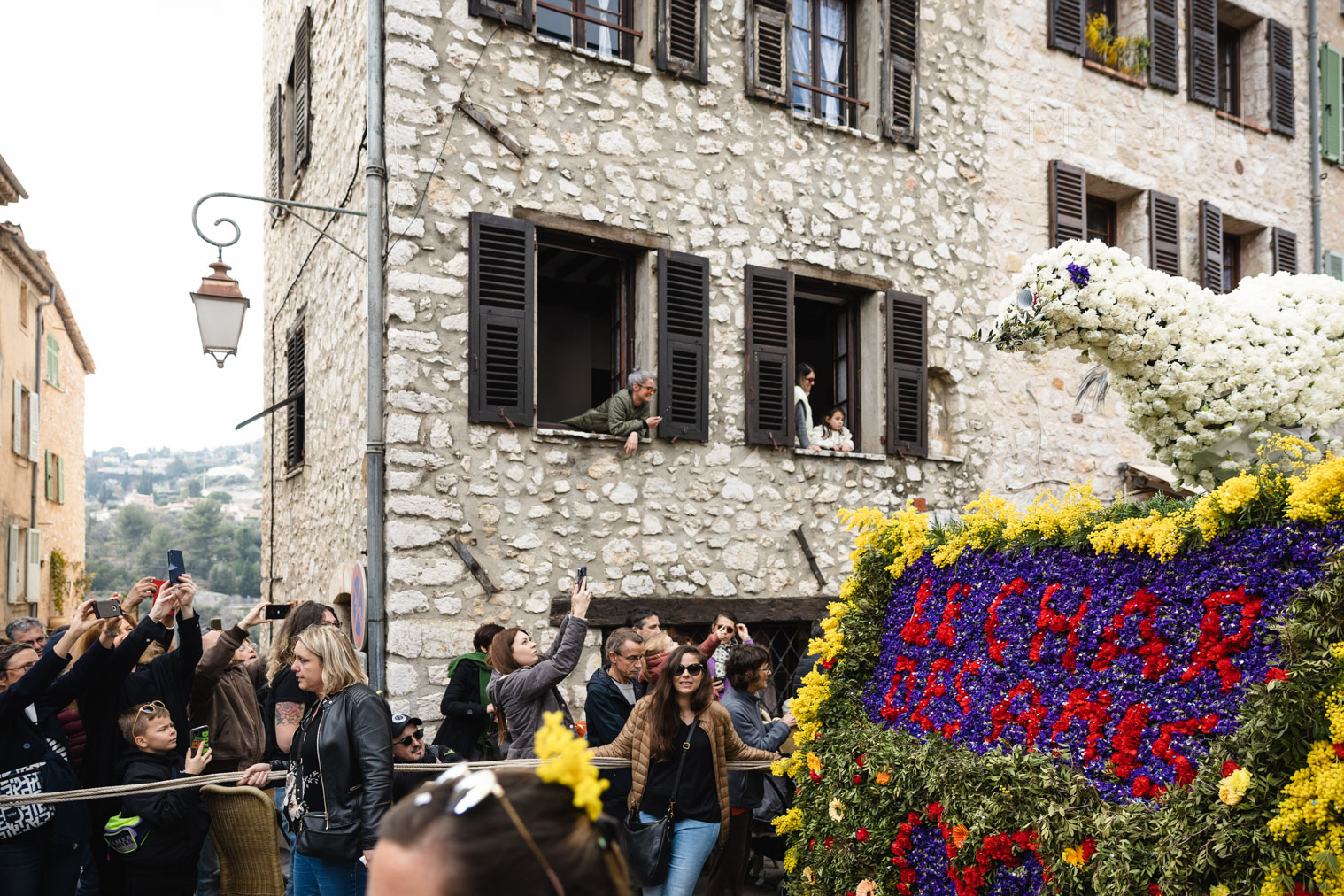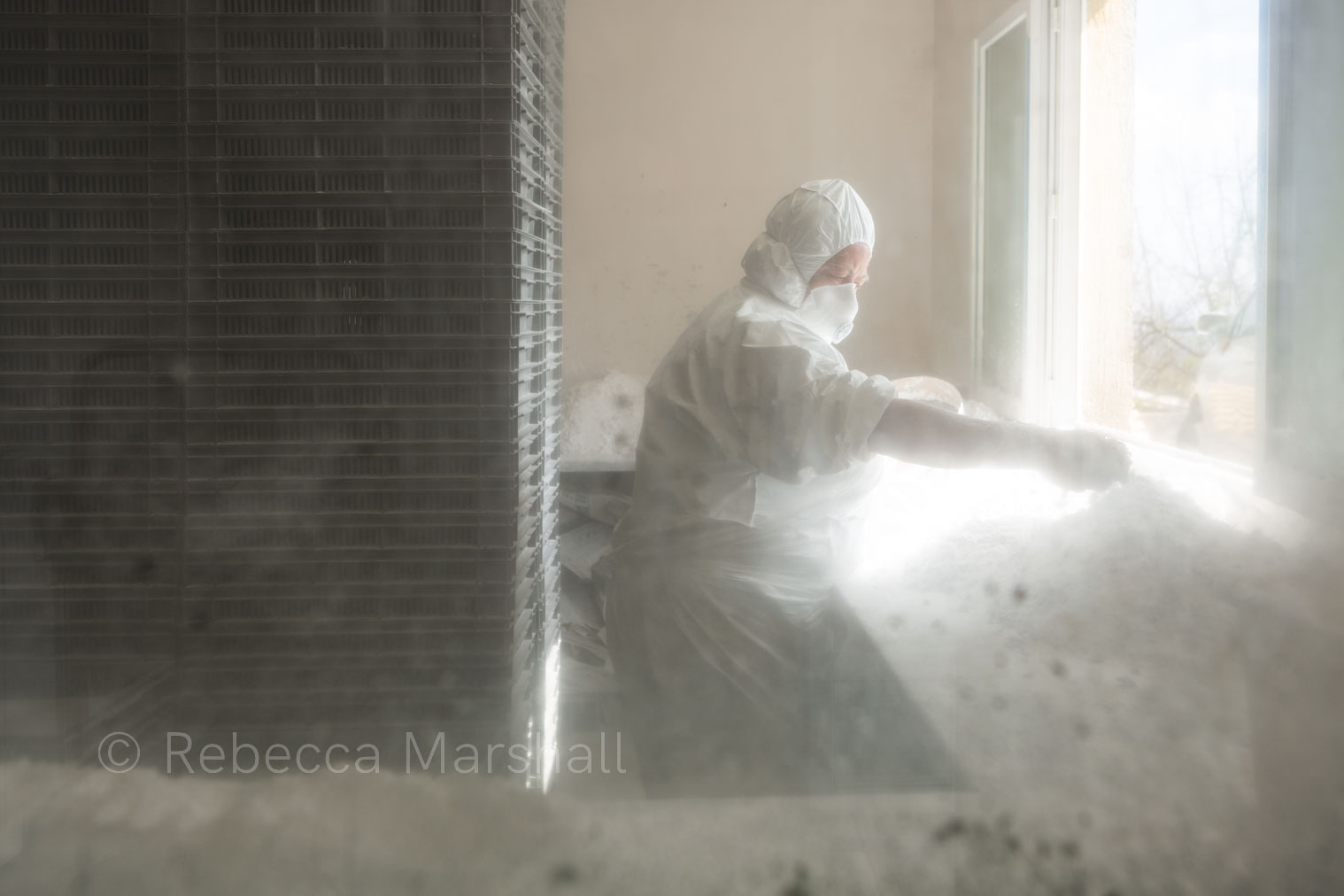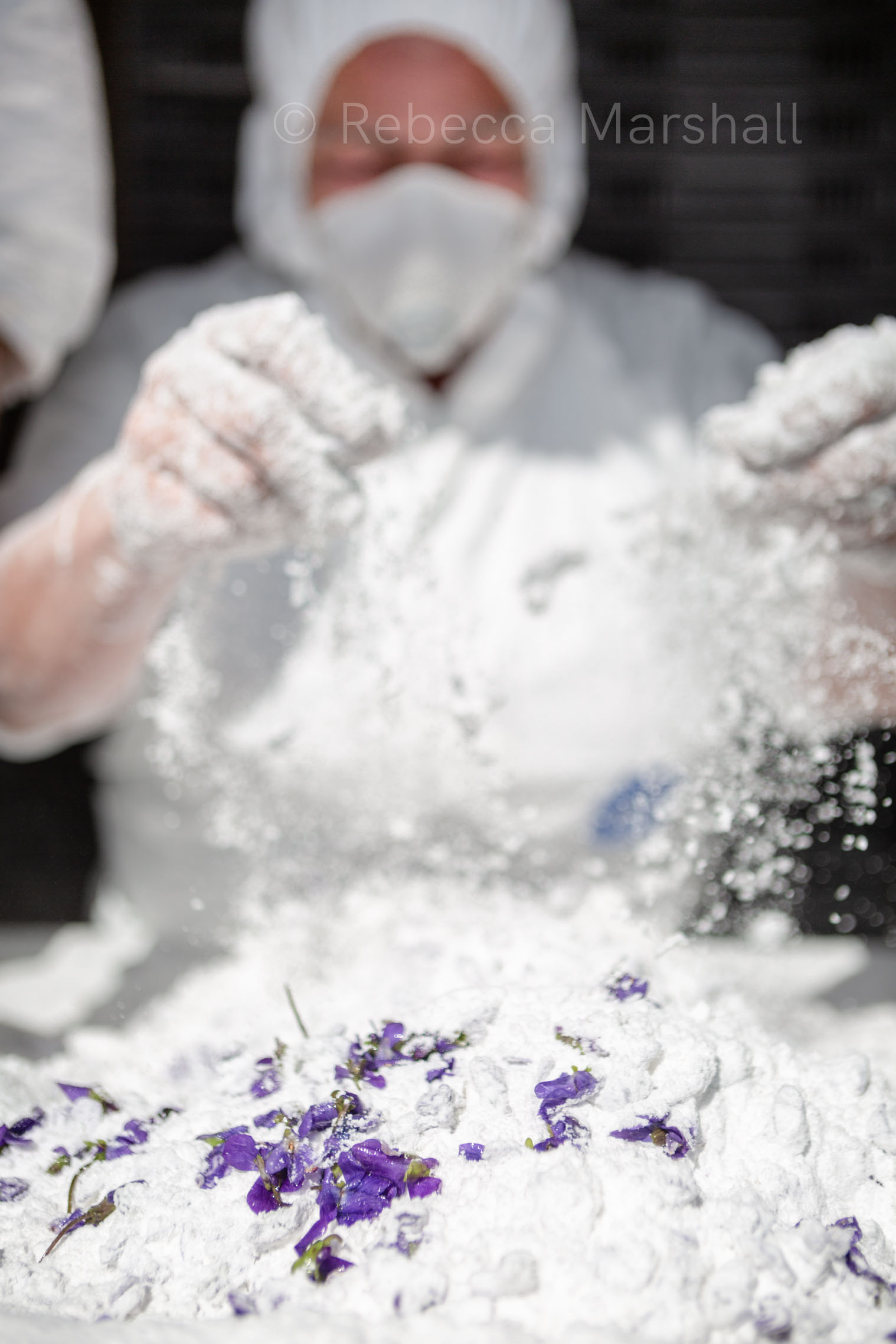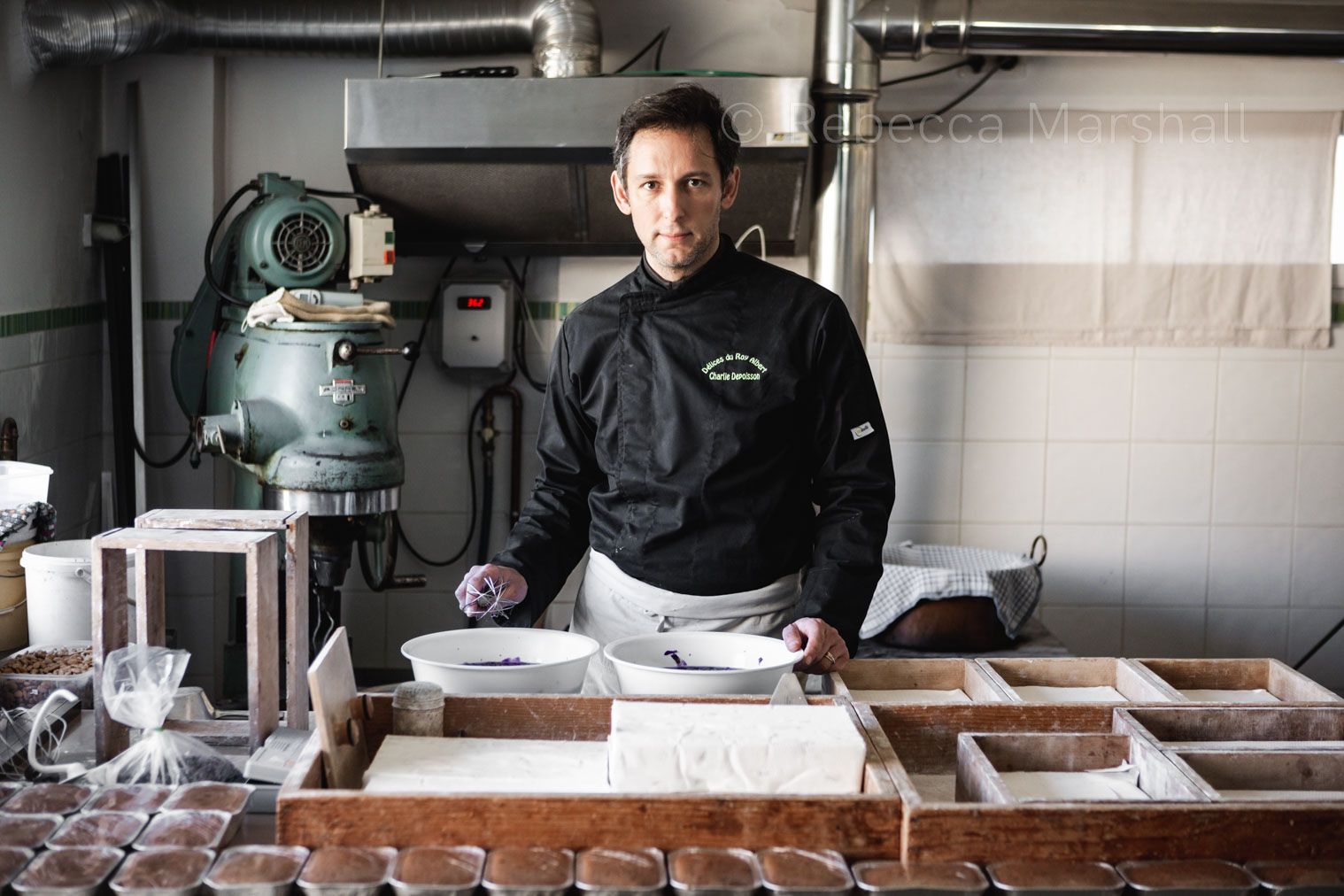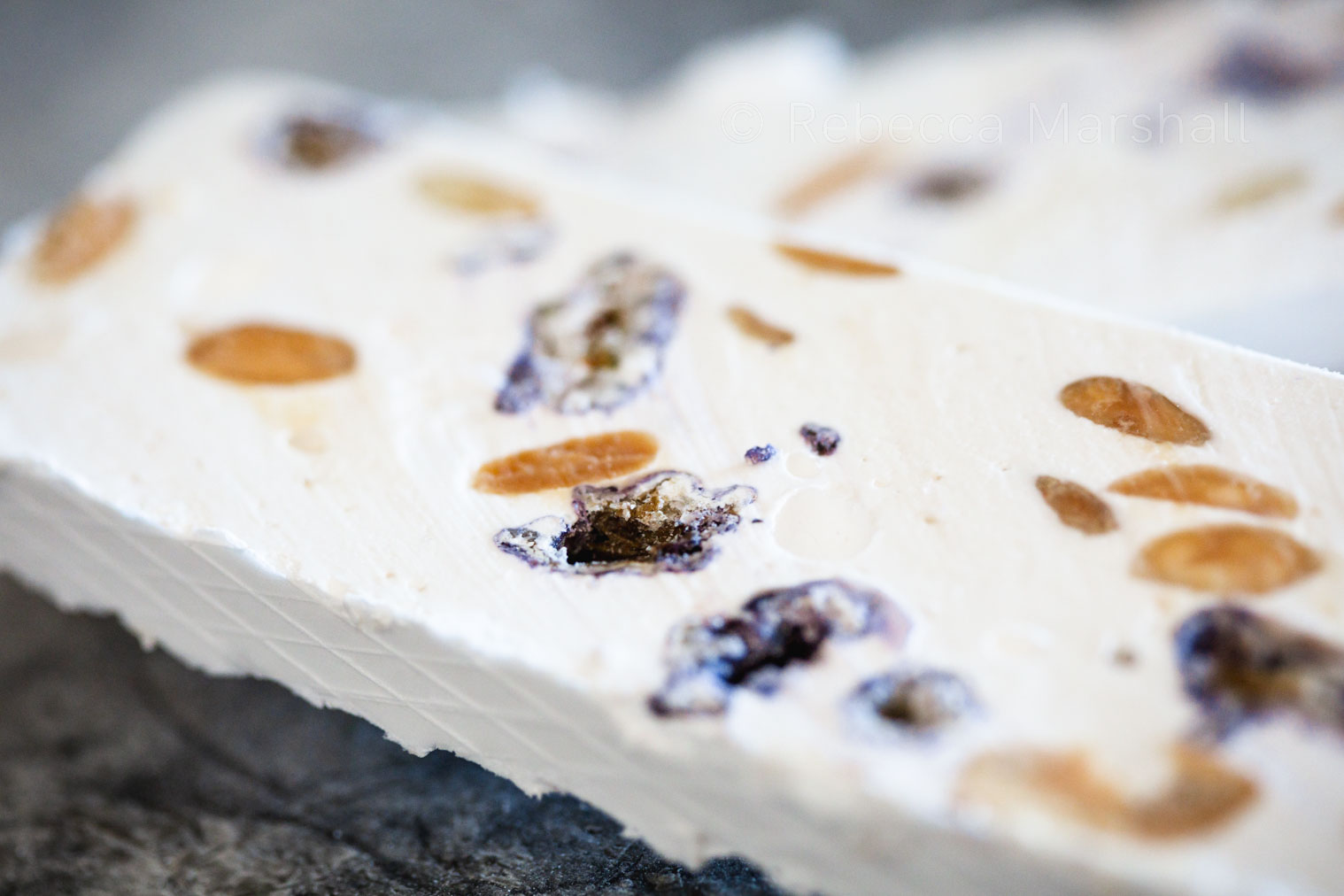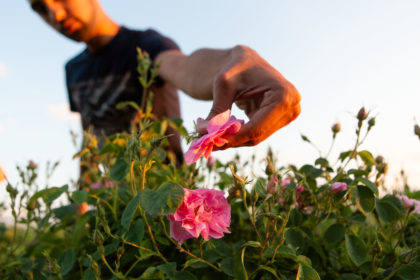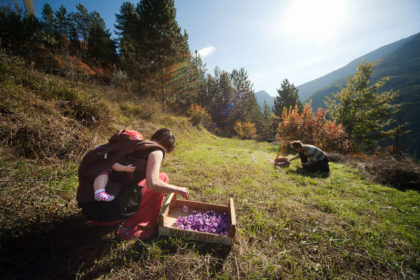The hilltop village of Tourettes-Sur-Loup, in the South of France, was once known far and wide for its violets. Less than half a century ago, over 70 local families produced and sold the blooms to florists as far afield as Paris. Today, only 3 remain. An explosion in property prices on the French Riviera has meant that most of Tourette’s violet-covered terraces have been replaced by villas and swimming pools. 82-year-old Denise Coche, her children and grandchildren are among the few Tourettains who still live from the sale of their violet flowers.
La Cité des Violettes
Tired, rusted signs at the entrance to the picturesque, medieval village grandly announce ‘La Cité des Violettes‘ [city of violets] – and ask visitors to refrain from making any noise as they drive through. Tourettes-Sur-Loup may not be the only place in France where violets are grown, but it is the only one where Viola odorata (the most common variety of violet in the wild – and the best choice for culinary uses) is commercially cultivated. I was told this, among many other violet facts, by a woman dressed head-to-toe in purple at the village’s Bastide aux Violettes – possibly the only museum in the world devoted to this little flower.
Roses are red, violets are blue…
Violets are certainly not new kids on the floral block. Over millennia, they’ve occupied themselves with a contradictory bunch of activities: flavouring the wine of Roman wine enthusiasts; curing drunkenness of ancient Greek wine enthusiasts; powdering French kings reluctant to bathe; and incarnating innocence, among others. They’ve certainly been growing wild around Tourettes-Sur-Loup for a while, according to Denise’s son Jérôme: “Back in the old days, violets were the only things that grew under the olive trees around here…them and chick peas“.
The flower’s success story as a local crop, however, goes back to the 1880s, when a new railway line was built. A string of previously isolated villages above the Cote d’Azur were suddenly connected by train to Nice, and so to the rest of France. Violets were at the dizzying height of fashion back then and, especially on St Valentine’s day, the blue-purple flower was as popular as the red rose for the purpose of an ardent declaration of everlasting love. Flowers grown on sunny terraces could be picked in the South of France and sent up to flower markets in the capital that very day.
Picky bloomers
But why do violets flourish here, in particular? The sheltered, sunny climate of the Cote d’Azur is as pleasing to violets as it is to villa owners, it seems. But these busy little flowers don’t only need sun. They also like the rough rocks and shallow soil of the land around Tourettes-Sur-Loup – conditions that make for poor growth in many other plants. They don’t like it too hot, though… well, they do and they don’t. The Coches explained to me that violets need cold, dry and sunny weather to kick off their winter flowering – yet if it stays cold, they won’t produce any scent. So the weather needs to warm up fast, with no cool winds to disturb them. Picky? Not at all…
A family affair
Three generations of Coches were out picking their blooms the day I dropped by. Jérôme and his sister Florence headed up the morning picking, along with Florence’s son. Matriarch Denise, in spite of her advancing age, tackled the steep lane up to the greenhouse with a giant flask of coffee for an 11 o’clock break – then donned a flowerpot on a rope around her neck and started picking too.
Denise and her late husband began production on their 4000 sq m of land in the 1970s, when picking violets at ground level in the fields (which must be done manually as the petals are so fragile) was backbreaking. Denise’s husband decided to innovate, taking things vertical, and today his legacy lives on. Inside greenhouses, most of their 80,000 violet plants grow in hanging structures that look like giant punching bags, cutting out much of the pain of picking.
Jérôme, a bear of a man, was astonishingly delicate as he plucked the tiny blooms. The majority of the Coches’ income comes from the sale of violets that they coat with sugar and dry for the gastronomy market, and the form of these flowers must be preserved. The family can pick up to 10 kg of flowers in a day: at 8,000 flowers a kilo, that’s a lot of picking (see my reportage about rose picking or photography of a saffron harvest to compare). Each plant flowers repeatedly, and is productive for up to 10 years. Heads were scratched when I asked when the family last bought new plants. “Err, never. We always grow our own plants from runners.”
Evasive scent
Tourettes-Sur-Loup is a breeze away from Grasse, the world’s fragrance capital, yet if you assumed that violets would be used in the creation of ‘violetty’ perfumes there, you’d be wrong. Violet scent is manufactured synthetically today, as the real deal is exceedingly hard to obtain (regular ethanol extraction techniques that work with most flowers just don’t for the violet). An ancient method achieved it by macerating flowers in animal fat, before separating out the perfume from the grease. Yet the yields were minuscule (once the undesirable blobs of pig lard were dealt with), and it is simply not a viable commercial process. Instead, the leaves (by-products that the Coches sell at the end of the flowering season) are used for an entirely different, green, woody scent that ‘fixes’ some perfumes – Eternity by Calvin Klein is one example. There was one last peculiarity, too, for me to discover about the scent of these little flowers… it disappears.
A powerful smell hit me when I first walked into the greenhouse, yet I realised some moments later that it was simply no longer there. How could that happen? I was surrounded still by a thousand violet blooms. “Yes, they’re funny little things“, explained Florence. “The perfume of a fresh violet closes your senses to it right after you smell it. We can’t smell violets at all any more, unless we take a week’s break and come back into the greenhouse”. Violets get their smell from ionone, an extremely sweet, dry fragrance. After stimulating our scent receptors, ionone binds to them and temporarily shuts them off completely – making violets a questionable symbol for everlasting love.
It is whispered that a brand new process is currently undergoing testing behind closed doors in Grasse, to extract perfume from these flowers using CO2 instead of ethanol. Grasse’s perfume industry was recently inscribed on UNESCO’s Intangible Cultural Heritage of Humanity list, encouraging perfumers to work with local flower growers. So perhaps violet growing will see a new dawn in Tourettes-Sur-Loup one day soon – if there is enough rocky land left in between the villas to grow them… and if the concept of ephemeral perfume catches peoples’ imaginations?
Flower festival
Even if real violet flower perfume does not take off, one thing growers can rely on is Tourettes-Sur-Loup’s Fête des Violettes. Since the 1950s, this annual festival has stepped into the breach of a decline in demand for violets and decreasing flower prices outcompeted by foreign imports, to create a local market for the flower. This key date in the French Riviera calendar attracts thousands to the village: to buy bunches of violets, wander around violet-decorated streets and admire violet-laden floats – for which the mairie [town hall] buys 5000 bunches from Tourettes’s last producers.
I went round to see how the Coches were getting on a few days before the festival. Even more family members had appeared, and all were picking and arranging the 25 blooms and 10 leaves that make up each bouquet, to be sold for 2€. “Last night I actually dreamed of violets”, groaned Florence. “It was a proper nightmare: there were loads of beautiful blue ones…but they were out of reach.” Things were tense – a drought winter and an unexpected cold snap meant there weren’t as many blooms as there should’ve been, and not nearly enough to satisfy the mairie‘s order.
On the day, roads around the village were closed and Tourettes-Sur-Loup was a sea of visitors. The Coches’ stall was queuing ten deep and their bouquets had sold out by mid-morning. Even Denise’s 5-year-old great-granddaughter, her face painted with violet motifs, had been put to work, tying bouquets. The public violet decorations were somewhat underwhelming (a few thousand tiny flowers only goes so far), but emotions were nonetheless invested in the procession of floats, and the playful ‘flower battle’ for children afterwards. I was surprised to learn that one year, an actual adult fight had broken out, over the rightful ownership of a… bunch of violets.
The danger of sugar
The Coches’ real business, however, is in gastronomy, with 80% of their income coming from the sale of crystalised flowers. The five firm petals of a Viola odorata hold together well, making this violet variety the very best to be preserved in sweet form. In a little building on the farm, the family wash their violet flowers, coat them in acacia gum and dust them with copious icing sugar, before leaving them on racks in a drying room for 5 days at 60°C. These crystallised violets are bought by restaurants, luxury grocers, sweet makers and individuals as far away as Switzerland… and Australia.
It never occurred to me, when I went to photograph the violet conditioning process, that it could be hazardous. So I was surprised, on arrival, to see Florence and her husband David fully clad in head-to-toe, protective workwear. Assuming the masks were worn to prevent any saliva falling into the food, I offered to put one on. The reply, “That’s entirely up to you, it’s at your own risk“, was somewhat perplexing. So I decided to take a walk on the wild side, and didn’t.
An hour later, when I found myself leaving the room to cough, and the zoom wheel on my lens started to stick, I understood. Violets, as I’d guessed, aren’t hazardous at all. But icing sugar, and the 200 kg mountain of it which was being enthusiastically sieved and flung around the violet flowers, is. The dust sitting in the air was so fine (finer than flour) that it was invisible. I barely noticed that I was breathing it in, and covered in it (until I licked my jumper…how else was I to check?).
Nougat innovation
Over in nearby Vence, Charlie might not have a chocolate factory, but he does have a nougat shop, Les Délices du Roy Albert. Out the back (within smelling distance of the till), Charlie Depoisson grills almonds, heats honey and beats eggs to make artisanal nougat, using his grandfather’s recipes and copper pans. A few years ago, he added to his grandad’s repertoire by inventing violet nougat, using flowers bought from the Coche family, and it quickly became one of his best sellers.
I had purchased a jar of Charlie’s fresh violet flower confit the year before, which, as an ingredient in my twist on a Kir royal, had gone down a storm at a party. Now I was keen to photograph the making of his violet nougat and had been on standby for several days (Charlie was waiting for the delivery of his order of violets, and as I knew better than most, there were supply chain issues this year). By the time I was summonsed, the hot nougat mixture into which Charlie was ready to pour the crystalised violets was enticing; a little later, I was tasting fresh nougat made from violets I’d seen growing. I won’t lie: such perks are one of the main reasons why I love being a photographer.
With a big bouquet of fresh violets given to me by the Coches perfuming my apartment, and a chunk of violet nougat in my stomach, I reckoned my violet experience had reached its conclusion…
…until I went hiking with a friend, in the empty hills high above Tourettes-Sur-Loup, a few weeks later. “Wait,” I said, as I caught a flash of blue under the trees. “Aren’t they...?” I got down on my knees and sniffed. Yes, they were indeed sweet wild violets! I bent down for another lungful of their fragrance, and… of course not. No genuine violet shares its scent secrets that easily.
> See Reportage portfolio
